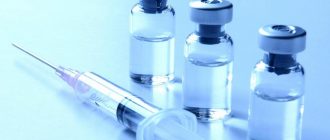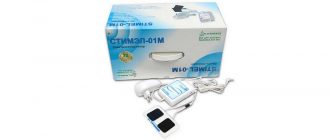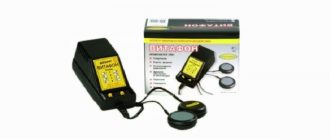Consequences after TURP surgery for prostate adenoma include various symptoms. Some of them are complications and require examination and the prescription of additional restorative procedures or medications, some are a natural reaction of the body or symptoms of the recovery period and go away on their own over time. Prostatectomy is a difficult operation for the body and requires a careful approach to the rehabilitation period, including dietary nutrition and drinking regimen, refusal of physical activity and sexual intercourse.
- Most common complications
- Painful sensations
- Heat
- Infection
- Blood in urine
- Cloudy urine
- Urinary incontinence
- Frequent urination
- Burning feeling when urinating
- Difficulty urinating
- Problems with potency
- Bleeding
- TUR syndrome
- Postoperative period in hospital
- Recommendations and restrictions after discharge
- Medicines
- Nutrition
- Fluid intake
- Physical exercise
- Sex life
- Hygiene procedures
Most common complications
Transurethral resection of the prostate can cause consequences within 1-2 months after the procedure. Some manifestations disappear after a few days, while others disappear after a month. In addition, during the postoperative period, TUR of the prostate gland should adhere to some restrictions and recommendations.
The most common complications after TUR of prostate adenoma:
- Painful sensations.
- Temperature increase.
- Impurities in the urine (blood or cloudiness, flakes).
- Urinary incontinence.
- Frequent urination.
- Difficulty urinating.
- Burning sensation when urinating.
- Bleeding.
- Problems with potency.
- TUR syndrome.
- Infection.
Painful sensations
Pain is one of the most common consequences of removal of prostate adenoma through the urethra. It occurs for several reasons: due to the use of a rubber catheter in the first days after surgery, the appearance of inflammation, bladder overflow or delayed pain relief.
To prevent pain, medications are prescribed; instead of a rubber catheter, a softer silicone one is used.
In the first 2-3 days after removal of the catheter, if recovery after surgery is not accompanied by complications, the pain disappears almost completely.
Heat
After part of the prostate gland is removed, inflammation may occur. This phenomenon occurs for 2 reasons:
- when an infection occurs;
- due to the body’s natural reaction to surgery.
Broad-spectrum antibiotics are prescribed 1-2 days and for 5-7 days after the operation; they prevent the occurrence of inflammation. If the symptom appears later in the recovery period, you need to consult a doctor and undergo an examination to identify the cause.
Infection
Despite all precautions, there is a small chance of infection during surgery. When infected after a TUR, the following may occur: prostatitis, pyelonephritis, cystitis and inflammation of the testicles. In addition, during the postoperative period, when the immune system is weakened, infection can penetrate from nearby organs of the genitourinary system and intestines. To reduce the likelihood of this, modern clinics use a plasma sterilizer, which is used to disinfect after surgery.
In addition, after surgery, antibiotics and anti-inflammatory drugs may be prescribed to reduce the likelihood of infection.
Blood in urine
When blood is released after TUR of the prostate, this is not considered a complication. This phenomenon is common and occurs within 2-4 weeks while the organ is still healing. Gradually, its amount in the urine will decrease; if this does not happen or it increases, this is already perceived by the doctor as a complication.
In order for the blood in the urine to disappear faster after a TUR of the prostate, it is recommended to adhere to the recommended drinking regime. Then the ureter will clear faster and the normal process of urination will be restored.
Cloudy urine
Cloudy urine is also not a complication. This phenomenon can occur either almost immediately or some time after the operation. It appears due to the fact that the scab moves away from the surface of the gland. A maximum of 2 months after the operation, urination is completely normal and cloudiness is no longer observed.
Urinary incontinence
If the sphincter is damaged during resection, incontinence may occur. This most often occurs when using a monopolar resectoscope. Plasma or bipolar instruments do not produce this phenomenon. Monopolar resectoscopes are outdated instruments for performing TURP and are used quite rarely.
Treatment of incontinence after TURP of the prostate occurs with the help of Kegel exercises. However, they, like other physical activities, can be performed no earlier than 2-3 weeks after surgery.
Frequent urination
Occurs for 2 reasons - due to irritation of receptors after surgery and impaired functioning of the bladder before surgery. With constant compression of the urethra and the bladder itself, it begins to contract more than normal, which leads to increased urination when these factors have already been eliminated.
After a TOUR of the prostate, urination may become more frequent not immediately, but after a month. This indicates the normalization of the process. Usually the symptom goes away within 2 weeks.
Burning feeling when urinating
It may indicate an incorrect operation or infection. Most often, the symptom is caused by a residual amount of tumor tissue remaining after surgery and impairing urination. If after surgery TUR of the prostate the burning sensation does not go away within 2 weeks, you should inform your doctor about the symptom and undergo an examination.
Difficulty urinating
Difficulty urinating after a TURP of the prostate occurs due to the natural increase in size of the organ after surgery - this compresses the urethra. The symptom occurs when there is insufficient effectiveness or violation of the recommendations for taking medications.
Urinary retention after removal of prostate adenoma goes away naturally after 4-6 weeks.
Problems with potency
Removal of prostate adenoma through the urethra can cause such a consequence due to damage to nerve endings during surgery. Most often, the symptom is temporary and goes away by the end of the postoperative period. It can also manifest as retrograde ejaculation - when sperm enters the bladder. The symptom can be eliminated by performing physiological procedures.
Bleeding
Occurs when capillaries are damaged during an operation with an outdated instrument. Modern techniques involve parallel coagulation of blood vessels, which almost completely eliminates the possibility of bleeding. If a symptom is detected, you should contact your treating urologist.
TUR syndrome
One of the most complex and rare possible complications, can also be called water intoxication. Occurs when isotonic fluid enters the bloodstream during washing of the prostate gland and bladder during resection with a monopolar resectoscope. The liquid causes the destruction of red blood cells and disrupts the electrolyte composition of the blood, which can lead to serious consequences, including death. It is especially dangerous in the presence of cardiovascular system disorders.
Modern methods of implementation eliminate the possibility of this complication. When they are carried out, a saline solution is used, which does not lead to such consequences.
Postoperative period in hospital
With TUR of the prostate gland, the postoperative period in the ward lasts from 3 to 7 days, depending on age, the possibility of complications and the speed of recovery of the body. After 1-2 days, the catheter is removed, which is installed in the bladder at the end of the operation. After this, the patient can be discharged home with consultation on rehabilitation in the postoperative period. The frequency of examinations is also established to monitor the progress of restoration of the genitourinary system.
Recommendations and restrictions after discharge
Recovery after a TUR of prostate adenoma requires compliance with certain restrictions and rules that relate to:
- Taking medications.
- Therapeutic diet.
- Drinking regime.
- Restrictions on physical activity.
- Abstinence from sexual intercourse.
- Carrying out hygiene procedures.
Medicines
Treatment after TUR of the prostate involves taking the following groups of medications:
- antibiotics;
- analgesics;
- anti-inflammatory drugs;
- alpha-blockers;
- uroseptic drugs.
Medicines after TUR of prostate adenoma are prescribed by a doctor on an individual basis, taking into account all contraindications and the need for use.
Nutrition
Rehabilitation after TUR operation for prostate adenoma includes dietary nutrition. It is necessary to completely exclude fatty, fried, salty, spicy, smoked foods. Products should not cause excessive gas formation, be easily digestible, and facilitate stool relief.
It is also necessary to establish a food intake regime - it is recommended to divide the daily diet into 5-6 parts with a break of 2-3 hours between meals.
Fluid intake
To restore urination, the body requires increased fluid intake. It is recommended to drink 3 liters of still or pure mineral water per day in small portions. Drinking strong tea, coffee and alcohol is prohibited.
Physical exercise
Within a week after surgery, patients feel noticeable relief. However, you should not rush to load the body with physical activity, because internal recovery processes are still ongoing. You should not do any strength or cardio exercises for the next 4-6 weeks. They are allowed only after examination and a doctor’s statement that rehabilitation is complete.
Sex life
Sexual intercourse during prostate recovery can worsen rehabilitation and cause complications. They are prohibited for 6 weeks after surgery. You should also avoid erections.
Hygiene procedures
Baths, hot baths and saunas are prohibited; it is recommended to take a warm shower daily.



